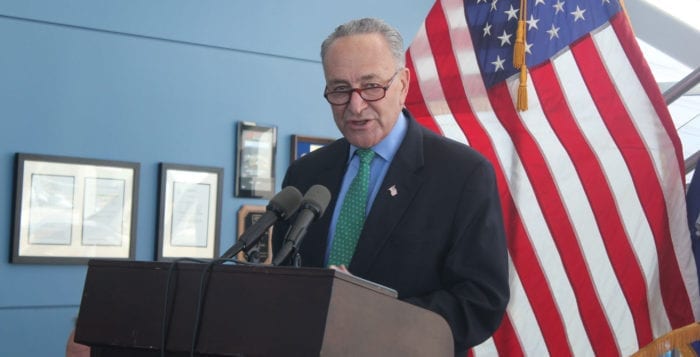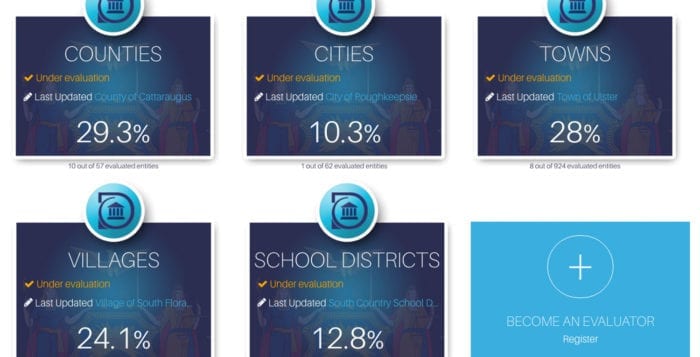Climate change is going to cost us. The prohibitive costs in both dollars and loss of life for past hurricanes in the New York area might be just the beginning if recent trends continue.
According to the Natural Resources Defense Council, a New York-based nonprofit whose mission is to “safeguard” the Earth, the cost of ignoring climate change will be as high as 3.6 percent of gross domestic product — hurricane damage, real estate losses, energy costs and water costs alone could cost the United States as much as $1.9 trillion annually by 2100.
For Long Island the first two pose the greatest risk.
Sea level has been rising consistently for the past several decades and the New York State Department of Environmental Conservation predicts sea levels will continue to rise to a high projection of 10 inches by 2020 and 30 inches by the 2050s. As sea levels have been rising so have water temperatures.
Scientists have repeatedly said rising sea levels will lead to an increase of storm surge-related flooding and rising sea surface temperatures will lead to stronger and more damaging hurricanes.
This October will mark the five-year anniversary of Hurricane Sandy, which resulted in 48 fatalities and caused more than $30 billion in damage for the state of New York alone. Former President Barack Obama (D) declared a state of emergency for New York, and although it was classified as a post-tropical nor’easter or superstorm when it touched down in New York, it led to hundreds of Long Islanders losing their homes and businesses, thousands losing power for weeks, school closures and much more damage.

According to Suffolk County, Sandy damages cost Brookhaven Town a total of just less than $30 million, and Huntington Town slightly more than $30 million. Considerable costs came from debris removal; aid for school district repairs; repairs to boardwalks, stairs, docks and sidewalk repairs; and fire department costs.
“Even with storms of the same intensity, future hurricanes will cause more damage as higher sea levels exacerbate storm surges, flooding and erosion,” a study done by the NRDC said. The study said in recent years hurricane damages have averaged $12 billion annually and more than 120 fatalities. “With business-as-usual emissions, average annual hurricane damages in 2100 will have grown by $422 billion and an astounding 760 deaths from just climate change impacts.”
In 2013, New York Gov. Andrew Cuomo (D) created the Governor’s Office of Storm Recovery to manage the $4.4 billion in relief funds that was made available through the U.S. Department of Housing and Urban Development.
A billion dollars in aid went to assisting 1,100 New Yorkers with reconstructing their homes, more than $76 million was awarded to rebuild 750 rental properties, and at least $49 million was awarded to 1,043 small businesses to support the replacement of essential equipment and renovations.
“Superstorm Sandy demonstrated that New York as we know it faces a different reality — a reality of increasingly frequent extreme weather events that cannot be ignored,” Cuomo said upon the two-year anniversary of the storm.
Sustainable Long Island’s executive director L. Von Kuhen said Sandy helped many residents realize the seriousness of the potential future. The nonprofit works to advance sustainable development for Long Island communities.
“I think Sandy … made a lot of people wake up and realize how vulnerable our coastal communities really are,” Kuhen said in a phone interview. “People are used to periodic flooding from normal storms but never anticipated anything of what Sandy caused. It was a wake-up call.”

He said many communities responded to that call, reaching out to the organization after the storm to create a plan for their town or village so they’re prepared for the next storm. He said the nonprofit conducted a survey in 2015 to see how many people were prepared for another major storm and the results showed Sandy helped teach many people.
“People knew a lot more than they did before the storm because I think a lot of people hadn’t thought about the possibility of a major storm hitting Long Island to the degree of Sandy,” he said. “I think there was a lot of public education at many levels after that.”
Real estate losses could cost the United States $34 billion in just eight short years, and $173 billion by 2075, according to the NRDC study. As sea levels continue to rise, homeowners on the water are going to see their backyards disappear, and water creep closer to their front doors.
“Our business-as-usual scenario forecasts 23 inches of sea level rise by 2050 and 45 inches by 2100,” the study said. “If nothing is done to hold back the waves, rising sea levels will inundate low-lying coastal properties. Even those properties that remain above water will be more likely to sustain storm damage, as encroachment of the sea allows storm surges to reach inland areas not previously affected.”
They estimated if heat-trapping gasses continue to be emitted at the current rate, in 2100 United States residential losses will reach $360 billion per year — with states like New York and areas like Long Island being especially vulnerable.
One Stony Brook resident has already run into a real estate problem concerning her house and proximity to the water.
“I had been dealing with the same insurance company for more than 35 years,” Donna Newman said in a phone interview. “And suddenly they notified me they wouldn’t be able to offer me home insurance any more.”
Newman said when she spoke with someone at the insurance company, they explained to her they could no longer cover her because she lives too close to the water— about a half a mile from it.
“Even with storms of the same intensity, future hurricanes will cause more damage as higher sea levels exacerbate storm surges, flooding and erosion.”
“I was pretty upset by that,” she said. “We have not moved our house; the water has always been there. I was very angry.”
Newman was told many other residents in her zip code were also no longer going to be insured due to their proximity to the water.
The United States as a whole will also face an increasing demand for energy as climate change continues, as well as exploding water costs for the driest and most water-stressed parts of the country.
“Many economic models have attempted to capture the costs of climate change for the United States,” the NRDC study said. “For the most part however these analyses grossly underestimate costs by making predictions that are out of step with the scientific consensus on the daunting scope of climatic changes and the urgent need to reduce global warming emissions.”
With all the daunting issues facing the United States, if greenhouse gas emission rates are maintained, America is far from the most vulnerable.
“The sad irony is that while richer countries like the United States are responsible for much greater per person greenhouse gas emissions, many of the poorest countries around the world will experience damages that are much larger as a percentage of their national output,” the study said.







































